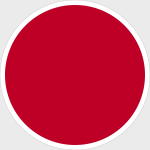Forces of Valor FOV812030A Imperial Japanese Navy Mitsubishi A6M2 "Zero" Fighter - Lieutenant Commander Sigeru Itaya, 2nd Squadron, 1st Section, IJN Carrier Akagi, Pearl Harbor, Hawaii, December 1941 (1:72 Scale)
"We have resolved to endure the unendurable and suffer what is insufferable."
- Japanese Emperor Hirohito speaking to the Japanese people after the atomic bombings, August 1945
 Aside from the early-morning raid on Pearl Harbor on December 7th, 1941, perhaps the biggest shock for American forces in the Pacific was the outstanding performance of the Imperial Navy's main carrier fighter, the beautifully proportioned Mitsubishi A6M2 Zero-Sen. Some 10,500 Zeros were built by Mitsubishi in no fewer than eight different sub-types, and although outclassed by more powerful US fighters from late 1943 onwards, the Zero retained a modicum of 'combatibility' due to its weight.
Aside from the early-morning raid on Pearl Harbor on December 7th, 1941, perhaps the biggest shock for American forces in the Pacific was the outstanding performance of the Imperial Navy's main carrier fighter, the beautifully proportioned Mitsubishi A6M2 Zero-Sen. Some 10,500 Zeros were built by Mitsubishi in no fewer than eight different sub-types, and although outclassed by more powerful US fighters from late 1943 onwards, the Zero retained a modicum of 'combatibility' due to its weight.
Pictured here is a 1:72 scale replica of a Japanese Mitsubishi A6M2 "Zero" fighter that was piloted by Lieutenant Commander Shigeru Itaya, who was attached to the 2nd Squadron, 1st Section, then embarked upon the IJN Carrier Akagi, when it participated in the raid on Pearl Harbor, Hawaii, during December 1941.
Now in stock!
Dimensions:
Wingspan: 5-1/4-inches
Length: 5-inches
Release Date: March 2022
Historical Account: "Multiple Flight Decks" - The Akagi was an aircraft carrier serving with the Imperial Japanese Navy during World War II. The only ship in her class, Akagi played a major part in the Attack on Pearl Harbor, but was sunk along with three other large carriers by dive bombers from US carriers Enterprise and Yorktown in the Battle of Midway.
Akagi was laid down as an Amagi class battlecruiser at Kure, Japan. However, the Washington Naval Treaty, which Japan signed in 1922, prevented Japan from completing Akagi. Because the Treaty authorized conversion of two battleship or battlecruiser hulls into aircraft carriers of up to 33,000 tons displacement, the incomplete hulls of Amagi and Akagi were selected for completion as carriers.
Amagi's hull was damaged beyond economic repair in the Great Kanto earthquake of September 1st, 1923. The remaining battlecruisers of the class, Atago and Takao, were cancelled and scrapped in 1924, in accordance with the terms of the Washington Naval Treaty.
Akagi, the only remaining member of her class, was launched on April 22nd, 1925, and completed at Kure Naval Arsenal on March 27th, 1927. As completed, the ship had two hangar decks with a capacity of 61 aircraft. The hangars opened onto two superimposed flying off decks at the bow. In theory, this permitted aircraft to take off directly from the hangars, while landing on the main flight deck above. Funnel gasses were discharged through a downturned starboard funnel. To compensate for the weight of the hangar structure, the horizontal armor was reduced from 3.8 to 3.1 inches and moved one deck lower. The belt armor was reduced from 10 to six inches and was also lowered by one deck.
In practice, the multiple flight deck arrangement proved unsuccessful. From 1935 to 1938, Akagi received a massive reconstruction at Sasebo Naval Arsenal. It extended the hangars forward, removed the flying off decks, and increased aircraft capacity to 91. The refit added an island superstructure on the port side of the ship, which was an unusual arrangement; the only other carrier to share this feature was a contemporary, the Hiryu. Akagi and the Hiryu were intended to work in a tactical formation with starboard-sided carriers, in order to improve the flight pattern around the formation, but the experiment was not continued beyond those two carriers.


